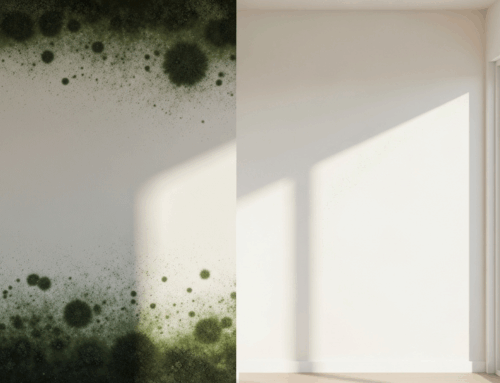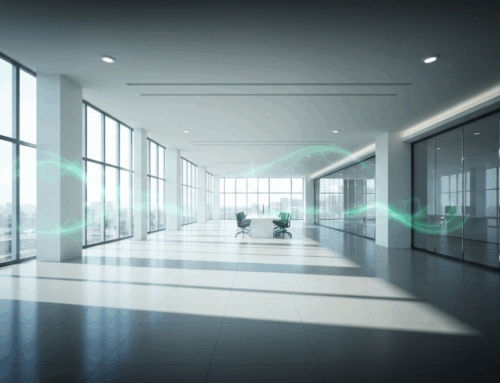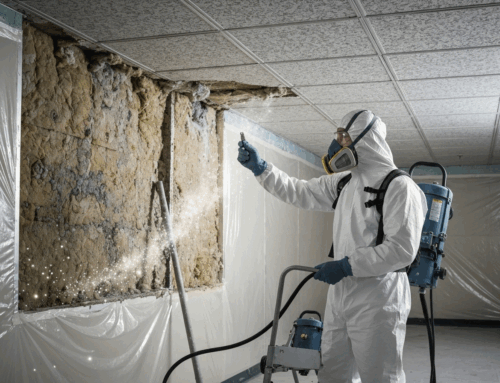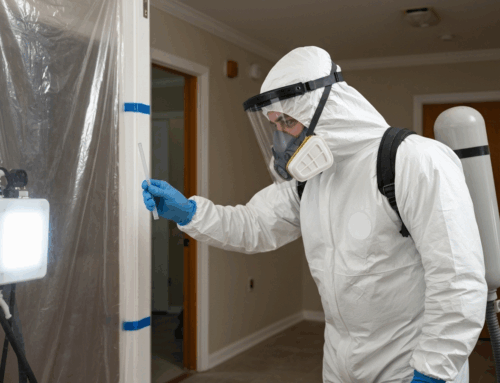Understanding How Mold Impacts Your Home’s Worth
Discovering mold in your South Carolina home can be a distressing experience, not only for the potential health risks it poses but also for its significant impact on your property’s market value. For many homeowners, their house is one of their most valuable assets. Protecting that investment means addressing issues that could deter potential buyers or force a reduction in the sale price. Mold is undoubtedly one such issue. Its presence signals underlying moisture problems, which can lead to structural damage and create an unhealthy indoor environment. When prospective buyers view a property, they are not just evaluating the aesthetics; they are assessing the condition and potential future costs. Visible mold, musty odors, or evidence of past water damage immediately raise red flags. This concern is particularly acute in South Carolina’s humid climate, where mold thrives if moisture is not properly controlled. Addressing mold promptly and effectively is a critical step in preserving your home’s value and ensuring a smoother, more successful sale process.
The perception of mold alone can significantly devalue a property. Even if the mold growth is minor, buyers often assume the worst – that the problem is more extensive than it appears, costly to fix, and potentially harmful to health. This fear leads to reduced offers or, in many cases, causes buyers to walk away entirely. Home inspectors are trained to identify signs of moisture intrusion and mold growth. If an inspection report reveals mold, it becomes a mandatory disclosure, further impacting the home’s marketability. Buyers may then demand extensive repairs, request significant price reductions, or require professional mold remediation before agreeing to purchase. Ignoring a mold problem or attempting insufficient DIY solutions can exacerbate the issue, leading to more widespread damage and a more complex, expensive remediation process down the line. Therefore, understanding how mold affects home value is the first step toward proactively managing the issue and protecting your investment, especially when considering Restoring SC home value after mold.
The financial implications extend beyond just the cost of removal. Mold often damages the materials it grows on, such as drywall, wood, carpeting, and insulation. Repairing or replacing these materials adds to the overall expense. Furthermore, the underlying cause of the mold – whether it’s a leaky pipe, roof leak, poor ventilation, or excessive humidity – must also be addressed to prevent recurrence. These necessary repairs, while essential for long-term property health, represent additional costs that buyers will factor into their offer or that sellers will need to address. In a competitive real estate market, a home with a documented mold issue stands at a distinct disadvantage. It can languish on the market longer, leading to increased carrying costs and potentially forcing the seller to accept a lower price than comparable properties without mold issues. Protecting your financial stake means tackling mold head-on with professional expertise.
Selling in South Carolina? Don’t Let Mold Tank Your Property Value
Selling a home in South Carolina comes with its unique set of challenges, largely influenced by the state’s warm, humid climate. This environment is a breeding ground for mold, making properties particularly susceptible to growth if moisture isn’t carefully managed. When you’re preparing to list your home on the market, every detail matters. Potential buyers will scrutinize the property, looking for any signs of neglect or potential problems. Mold, even minor surface growth, is a major deterrent. It suggests poor maintenance, hidden water damage, and potential health hazards. In the competitive South Carolina real estate market, such issues can quickly turn interested buyers away, causing your property to sit on the market longer than average.
The discovery of mold during a pre-sale inspection is incredibly common in South Carolina due to the prevalent humidity, especially in areas like crawl spaces, basements, and attics. When an inspector finds mold, it’s typically documented in the report shared with the buyer. This transparency, while legally required, puts the seller at a significant disadvantage during negotiations. Buyers will often request mold remediation services by a certified professional, structural repairs if the mold has caused damage, and potentially other moisture control measures, such as dehumidifier installation or crawl space encapsulation. These demands can significantly reduce your net profit from the sale. Moreover, disclosing a known mold issue upfront, while ethical and often legally necessary, can immediately lower the pool of interested buyers, as some may be unwilling to take on a property with a mold history.
Real estate professionals in South Carolina consistently advise sellers to address known issues, particularly mold and moisture problems, before listing the property. Tackling mold proactively allows you to control the process, choose a reputable mold remediation company, and ensure the work is completed to a high standard. Having documentation of professional mold removal and any necessary moisture control measures can be a significant selling point, offering potential buyers peace of mind. Trying to hide mold or performing superficial fixes is not only risky from a disclosure standpoint but also likely to be discovered during an inspection, severely damaging buyer trust and jeopardizing the sale. Investing in professional mold remediation prior to listing is a strategic financial decision that helps you maintain control over the sale process and achieve the best possible return on your investment, ultimately Restoring SC home value after mold concerns.
Consider the typical concerns of a buyer in South Carolina: is the HVAC system adequate for the humidity? Is the crawl space dry and well-ventilated? Are there signs of past water intrusion from storms? Mold presence often indicates failures in these critical areas. By addressing the mold and its root cause before listing, you are not just removing a cosmetic issue; you are demonstrating that the fundamental health of the house has been addressed. This makes your property more attractive and less risky in the eyes of a buyer, leading to quicker sales times and stronger offers, thereby avoiding the significant depreciation that mold can inflict on a home’s market value in the Palmetto State.
The Financial Advantages of Early Mold Remediation
When faced with a mold problem, it can be tempting to delay action, perhaps hoping it won’t get worse or trying to save money in the short term. However, this is a costly mistake, particularly in a climate like South Carolina’s where mold can spread rapidly. The financial advantages of addressing mold issues early with professional remediation are substantial and far outweigh the costs associated with procrastination.
Firstly, mold is a living organism that feeds on organic matter in the presence of moisture. The longer it is allowed to grow, the more material it consumes and damages. What might start as a small patch of mold on drywall or insulation can quickly spread to larger areas, affecting structural components like wood framing. Early intervention limits the scope of the problem, meaning less material needs to be removed, replaced, or repaired. This directly translates to lower remediation costs.
Consider the potential progression of a mold issue if left untreated:
- Initial Stage: Small patch of mold, possibly localized to a single area affected by a recent leak or condensation. Minimal material damage.
- Moderate Stage: Mold has spread, affecting multiple square feet and potentially penetrating slightly into building materials. Some material replacement likely needed.
- Advanced Stage: Widespread mold growth across walls, ceilings, or flooring, significant damage to porous materials, potential structural compromise, and pervasive musty odors. Extensive demolition, material replacement, and structural repairs required.
As the problem escalates through these stages, the complexity and cost of remediation increase exponentially. A small, contained job might involve drying, cleaning, and applying an antimicrobial treatment. A large-scale infestation could require extensive demolition of affected walls, floors, and ceilings, specialized containment procedures to prevent spore spread, and reconstruction. The cost difference can be thousands, or even tens of thousands, of dollars.
Furthermore, mold often points to a larger underlying moisture problem. Ignoring the mold means ignoring the source, whether it’s a persistent leak, poor drainage, or inadequate ventilation. These moisture issues can cause other significant problems, such as wood rot, pest infestations, and even structural deterioration over time. Addressing the mold early involves identifying and fixing the source of moisture, preventing these additional, potentially more expensive, problems from developing. This proactive approach safeguards the structural integrity and longevity of your home.
From a resale perspective, as discussed earlier, early remediation protects your home’s market value. A home with a clear history of professional mold removal and moisture control measures is far more appealing and less risky to buyers than one where mold is discovered during an inspection or is suspected due to lingering odors. Remediation costs incurred before listing are an investment in your property’s salability and value, often recouping more than their expense in the final sale price. Conversely, dealing with mold during negotiations typically results in lower offers and forces the seller into a less favorable position, potentially costing them much more than the initial remediation would have.
Finally, consider the health implications. Mold exposure can cause various health issues, including allergies, respiratory problems, and other sensitivities. Living in a mold-infested home can negatively impact the health of its occupants. While this is primarily a health concern, prolonged exposure requiring medical treatment also carries financial costs. Ensuring your home is mold-free contributes to a healthier living environment and avoids potential health-related expenses.
In summary, the financial case for early mold remediation is clear. It minimizes the extent of mold growth and material damage, prevents the escalation of underlying moisture problems, protects your property’s market value, and avoids potential health-related costs. Waiting to address mold in your South Carolina home is a gamble that is likely to cost you significantly more in the long run, compared to the strategic investment of early, professional intervention. This proactive approach is key to Restoring SC home value after mold is discovered.
The Professional Process for Restoring SC Home Value After Mold
Successfully Restoring SC home value after mold requires more than just wiping away visible growth. Mold remediation is a specialized process that demands expertise, proper equipment, and adherence to safety protocols. A professional mold remediation company follows a systematic approach to ensure the mold is not only removed but also that the underlying cause is addressed and the environment is safe.
The typical professional mold remediation process involves several key steps:
- Assessment and Inspection: The process begins with a thorough inspection to identify the extent of the mold growth, the types of mold present, and most importantly, the source of moisture causing the problem. Professionals use specialized tools like moisture meters and thermal cameras to locate hidden water sources within walls or under floors. This initial assessment is crucial for developing an effective remediation plan.
- Containment: To prevent mold spores from spreading to other parts of the home during the remediation process, containment measures are put in place. This typically involves sealing off the affected area using plastic sheeting and negative air pressure machines equipped with HEPA filters. This creates a barrier that keeps airborne mold spores confined to the work zone, protecting occupants and unaffected areas of the home.
- Air Filtration: Throughout the process, HEPA air scrubbers and negative air machines are used within the containment zone. These powerful filters capture airborne mold spores, dust, and other particles, cleaning the air and reducing the risk of cross-contamination.
- Mold Removal (Remediation): This is the core step where the mold is physically removed. The specific techniques used depend on the type of surface affected. Non-porous materials (like glass or metal) can often be cleaned and disinfected. Porous materials (like drywall, insulation, carpeting, and often wood) that have significant mold growth are typically removed and bagged for proper disposal, as mold hyphae can deeply penetrate these materials and be impossible to fully clean. Antimicrobial agents may be applied to remaining materials to kill mold and inhibit future growth.
- Cleaning and Sanitization: After the mold-infested materials are removed, the entire work area is thoroughly cleaned using HEPA vacuums to capture remaining spores and debris. All surfaces within the containment area are cleaned and sanitized to eliminate any residual contamination.
- Drying: Ensuring the affected area is completely dry is critical to prevent mold from returning. Dehumidifiers and air movers are used to reduce moisture levels in the air and materials. Moisture readings are taken to confirm that structural materials have reached acceptable dryness levels.
- Restoration: Once the mold is removed and the area is dry and clean, restoration begins. This involves repairing or replacing damaged building materials, such as drywall, flooring, insulation, and painting. The goal is to return the affected area to its pre-mold condition.
- Post-Remediation Verification: After the remediation and restoration are complete, a post-remediation inspection and testing may be conducted. This can involve visual inspection, moisture readings, and sometimes air sampling by an independent third party or the remediation company to confirm that the mold issue has been resolved and the air quality meets acceptable standards. This step provides peace of mind and documentation of successful remediation.
Attempting mold removal yourself, especially for significant growth, is not recommended. Without proper containment and equipment, you risk spreading mold spores throughout your home, exacerbating the problem and potentially exposing yourself and your family to health hazards. Professional remediators have the training, personal protective equipment (PPE), and specialized tools necessary to safely and effectively remove mold and address the underlying moisture issue. This comprehensive process is the most reliable way of not only removing mold but also of documentation necessary for potential future sales, truly Restoring SC home value after mold has been a problem.
Professional remediation also addresses the root cause of the mold, which is essential for long-term prevention. A reputable company will identify leaks, condensation issues, or ventilation problems and recommend or perform the necessary repairs to prevent mold from returning. This holistic approach ensures the health of your home and protects your investment for years to come.
Key Strategies for Preventing Mold Recurrence
Mold removal is only half the battle; preventing it from coming back is equally, if not more, important, especially in the humid climate of South Carolina. Successful mold prevention focuses on controlling moisture, as mold cannot thrive without water. Implementing effective moisture control strategies throughout your home is crucial for maintaining healthy indoor air quality and preserving your property’s condition.
Here are key strategies for preventing mold recurrence:
- Identify and Fix Moisture Sources: This is the most critical step. Immediately repair any leaks from plumbing, roofs, windows, or foundations. Address drainage issues around your home that might allow water to seep into basements or crawl spaces. Ensure gutters and downspouts are clear and direct water away from the foundation.
- Control Indoor Humidity: Maintain indoor humidity levels between 30% and 50%. This is particularly challenging in South Carolina’s humid environment. Use air conditioners and dehumidifiers, especially during warmer months and in areas prone to moisture, like basements, crawl spaces, and bathrooms. Consider a whole-house dehumidifier for consistent control.
- Improve Ventilation: Ensure proper ventilation in areas that generate a lot of moisture, such as bathrooms, kitchens, and laundry rooms. Use exhaust fans when showering, cooking, or using the dryer, and let them run for a while afterward. Open windows when weather permits to allow fresh air circulation. Ensure attics and crawl spaces are properly ventilated to prevent moisture buildup.
- Insulate Pipes and Ductwork: Pipes and ducts, especially in unconditioned spaces like attics or crawl spaces, can sweat when exposed to warm, humid air, leading to condensation and potential mold growth. Insulating them helps prevent this condensation.
- Clean and Dry Quickly: If spills or flooding occur, clean and dry the affected areas and materials within 24-48 hours to prevent mold growth. For larger water intrusions, professional water damage restoration may be necessary.
- Select Appropriate Materials: When renovating or repairing, consider using mold-resistant materials in areas prone to moisture, such as mold-resistant drywall or paints.
- Clean Regularly: Regular cleaning helps remove mold spores and prevents growth on surfaces. Use mold-killing cleaning products on hard surfaces in bathrooms and kitchens.
- Ensure Proper Crawl Space Management: In South Carolina, crawl spaces are particularly vulnerable to moisture and mold. Consider crawl space encapsulation or installing a vapor barrier on the ground to prevent moisture from rising into the space. Combining this with a crawl space dehumidifier can drastically reduce humidity and prevent mold growth.
- Monitor Indoor Air Quality: Consider using an indoor air quality monitor to track humidity levels and other relevant metrics, allowing you to take action before mold becomes visible.
Implementing these preventative measures is an ongoing process, but it’s essential for the long-term health of your home and its occupants. By controlling moisture effectively, you drastically reduce the risk of mold recurrence, protecting your investment and maintaining a healthy living environment. This proactive approach is fundamental to not only removing existing mold but also in preserving the improvements made during remediation, securing the process of Restoring SC home value after mold has been successfully addressed.
Why Choose a Local SC Expert for Mold Damage Restoration
When dealing with mold damage in your South Carolina home, choosing a local expert for remediation and restoration offers distinct advantages over national chains or general contractors without specialized mold training. Local professionals understand the specific environmental challenges and building practices common in the region, which are critical for effective and lasting mold solutions.
South Carolina’s unique climate, characterized by high humidity, especially along the coast, and frequent periods of rain, creates conditions highly conducive to mold growth. A local expert is intimately familiar with how these environmental factors impact buildings in the state. They understand common moisture intrusion points specific to SC architecture and climate, whether it’s issues with coastal moisture affecting homes on barrier islands or humidity concerns in crawl spaces prevalent throughout the state. This localized knowledge allows them to conduct more accurate assessments, identify the root causes of mold more effectively, and tailor remediation strategies that are best suited to the local conditions.
Furthermore, local companies often have established relationships with other local contractors, such as plumbers, roofers, or HVAC specialists, who may need to be involved in fixing the underlying moisture issues. This network can streamline the entire process, ensuring that the source of the problem is addressed efficiently, preventing future recurrence. They also understand local building codes and regulations relevant to mold remediation and restoration, ensuring all work is compliant.
Responsiveness is another key advantage. When you have a mold issue, particularly one stemming from sudden water damage, timely response is crucial to prevent the problem from worsening. A local South Carolina company can typically respond faster to your needs than a distant national company. Their proximity means quicker inspections and the ability to begin the remediation process sooner, minimizing damage and potential health risks. For residents dealing with the aftermath of storms common in SC, a local expert is invaluable for their ability to mobilize quickly and provide necessary services.
Choosing a local expert also means you are working with professionals who are part of your community. They have a reputation to uphold locally and are often more invested in providing high-quality service and customer satisfaction. Their business depends on serving the local community well. This often translates to more personalized service, better communication, and a higher level of accountability. You are more likely to receive tailored advice specific to your home and the local environment.
Finally, using a local South Carolina company supports the local economy. It keeps money within the state and helps sustain local jobs. While cost is always a factor, the value provided by local expertise, responsiveness, and community investment often results in a more effective, less stressful, and ultimately more cost-efficient solution for mold damage restoration. This specialized local knowledge and service are paramount when seeking to truly recover and ensure you are Restoring SC home value after mold has caused problems.
Whether the mold issue is in your crawl space in Charleston, your attic in Greenville, or a bathroom in Columbia, a local South Carolina mold remediation expert understands the specific challenges you face. They possess the necessary skills, experience, and local insight to effectively address the mold, fix the moisture problem, and provide peace of mind, ensuring your home is healthy and its value is protected.
Have questions? Contact us here.






